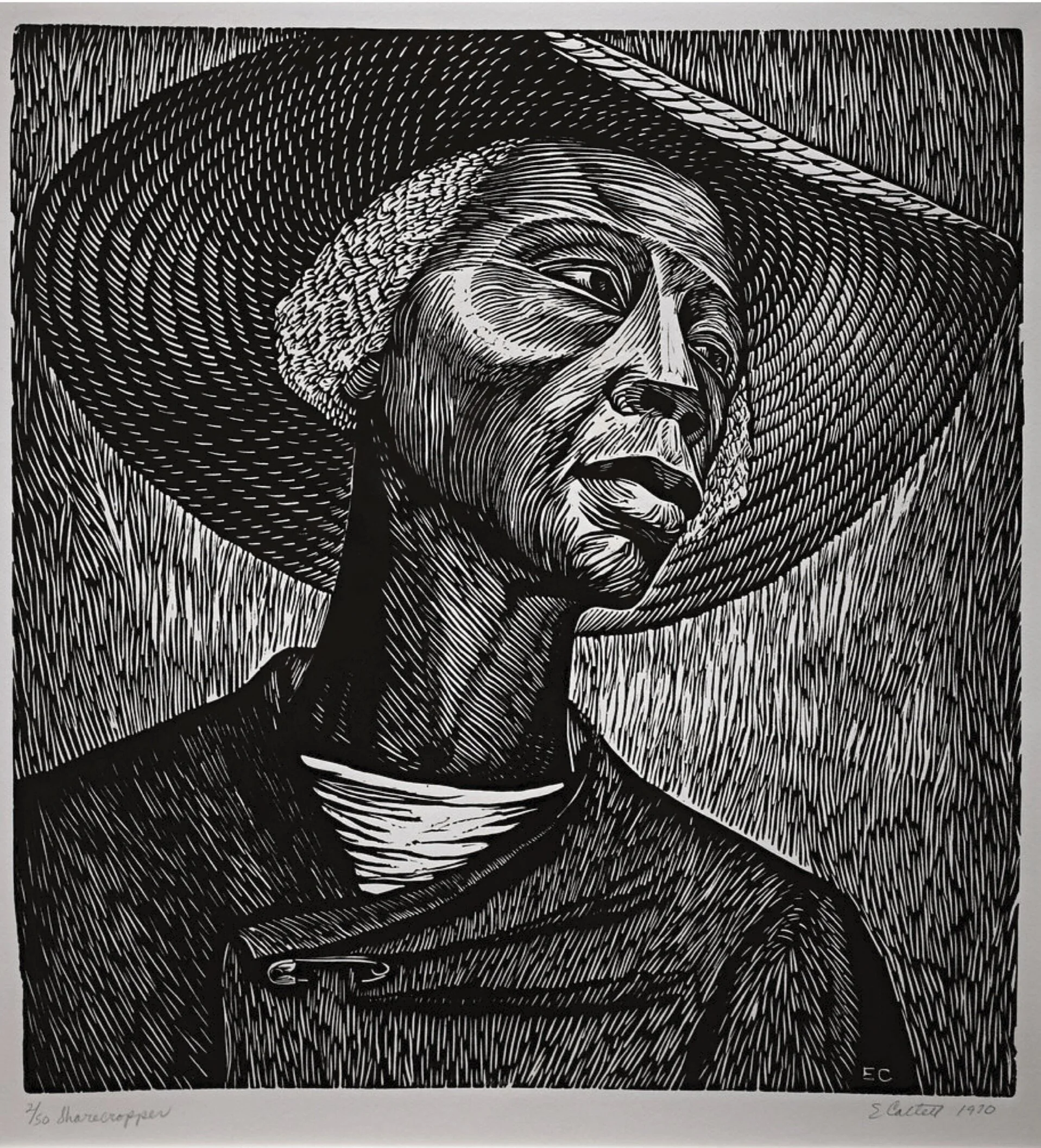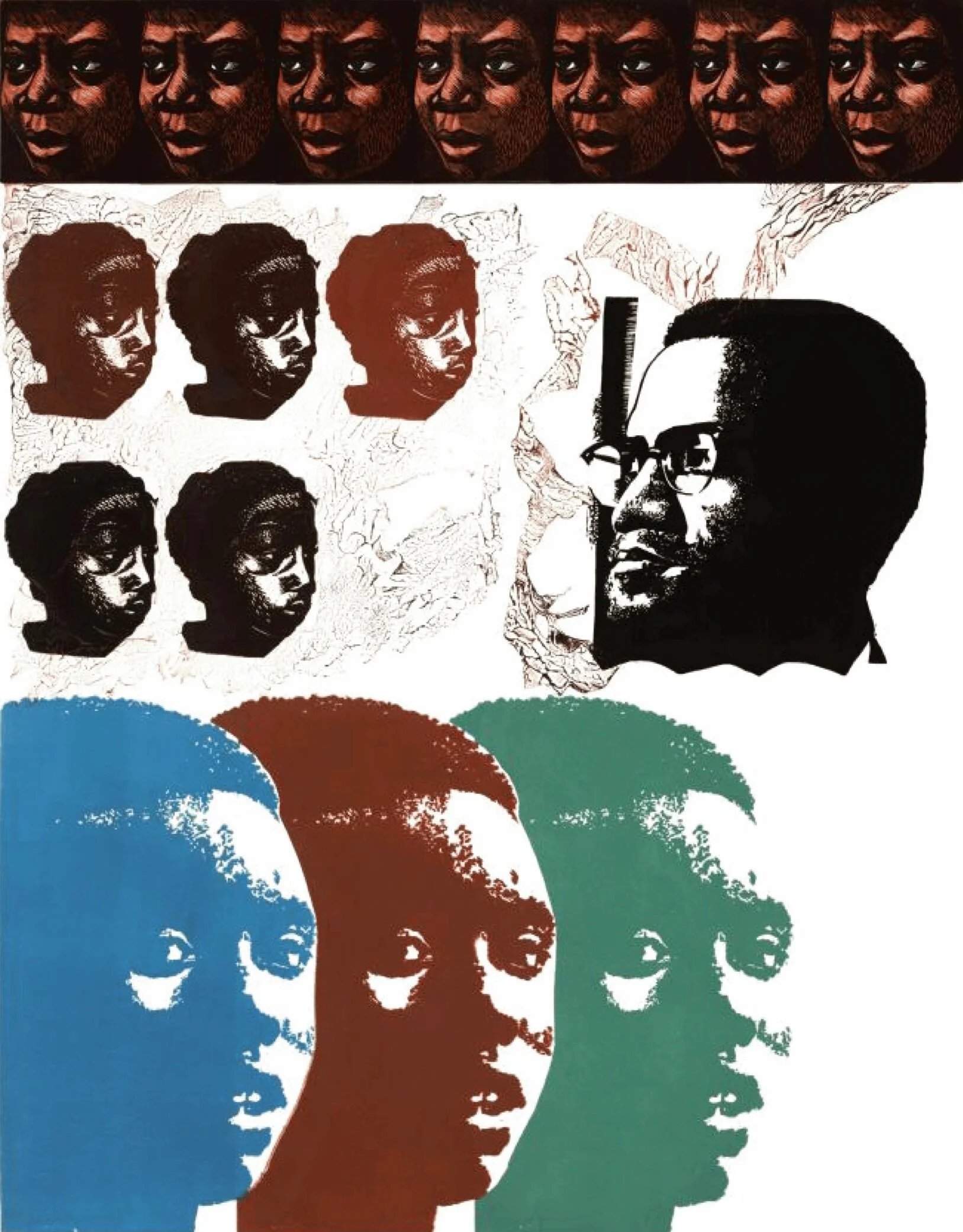Elizabeth Catlett
Today we honor Elizabeth Catlett (1915-2012), a sculptor and printmaker who used her artistic talents to advocate for social change. As a young girl, she knew she wanted to be an artist, though few Black women were practicing artists and art museums in the South were closed to Black people. From her grandmothers, Catlett heard stories of slavery; from her mother, she heard about the realities of life in the slums of the nation’s capital. These narratives shaped her early awareness of the suffering and exploitation of Black people in the United States and laid the groundwork for her artistic vision.
Catlett is well known for her depictions of Black culture and experience in America during the 20th century. Her subjects included images of female empowerment and motherhood and portraits of prominent Black historical figures — including Malcolm X, Martin Luther King Jr., and Harriet Tubman. “I have always wanted my art to service Black people,” she once said, “to reflect us, to relate to us, to stimulate us, to make us aware of our potential.” However, her advocacy did not stop there.
Elizabeth Catlett, For My People, 1992. Lithograph of four Black figures singing in unison; one kneeling with hands clasped in prayer, © Estate of Elizabeth Catlett/Licensed by VAGA, New York, NY
Catlett firmly believed that art could raise the consciousness of injustice, expose abuses of power, and illuminate possibilities for social transformation. Throughout her life, she clearly articulated her commitment to justice for all oppressed peoples through eloquent and impassioned visual statements that resonate, as she said, “for liberation and for life.”
In 1946 Catlett would travel to Mexico to establish permanent residence. Initially, she traveled to Mexico interested in the murals and graphic art produced in the aftermath of the Mexican Revolution. Catlett’s decision to make her home in Mexico was in part a response to the Cold War escalation of U.S. government attacks on progressive artists, intellectuals, and activists following the end of World War II. Catlett’s immersion in Mexican life and culture fostered her recognition of commonalities and convergences among Black and Mexican peoples’ histories and experiences. She also grew increasingly aware of mestizaje, the blending of indigenous, Spanish, and African ancestries shared by many in Mexico.
Elizabeth Catlett, Sharecropper, 1952. Linoleum cut of an anonymous Black woman wear a straw hat while looking off into the distance, © 2021 José Sanchez / Artists Rights Society (ARS), New York / VEGAP, Spain
In 1962 Catlett became a Mexican citizen. Based upon her apparent political affiliations, she was subsequently denied entry to the United States until 1971, after she was granted a visa to attend the opening of her solo show at the Studio Museum in Harlem. Though she was barred from her country of origin, during the 1960s, her work proclaimed solidarity with the Civil Rights and Black Power movements. She particularly emphasized the role of women in these movements.
Catlett retired from teaching in 1975, leaving her with more time to dedicate to her art. She continued to create prints and sculptures to make visible the experiences of African Americans and other oppressed groups of people. Her sculptural representations of women, in wood, stone, and clay, sometimes cast in bronze, are passionate, determined, resilient, and celebratory - mothers, workers, and survivors.
Catlett died on April 2, 2012, at her home in Cuernavaca, Mexico.
Elizabeth Catlett, Malcolm X Speaks for Us, 1969. Linoleum cut of Civil Rights leader Malcom X surrounded by multiple faces of Black women, Gift of the artist



